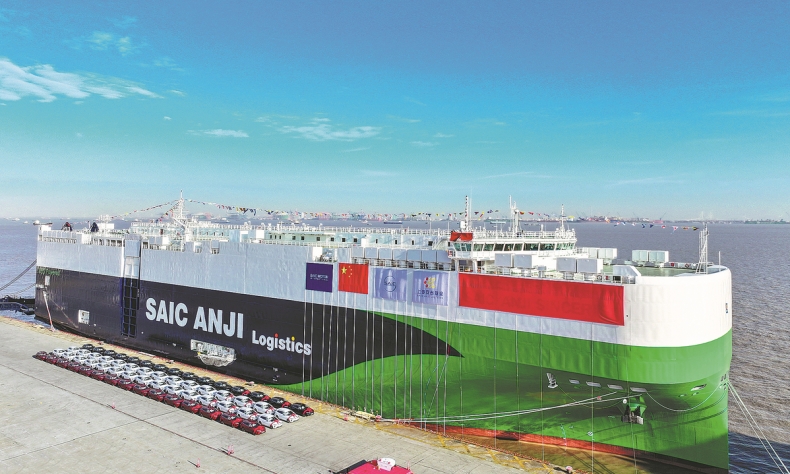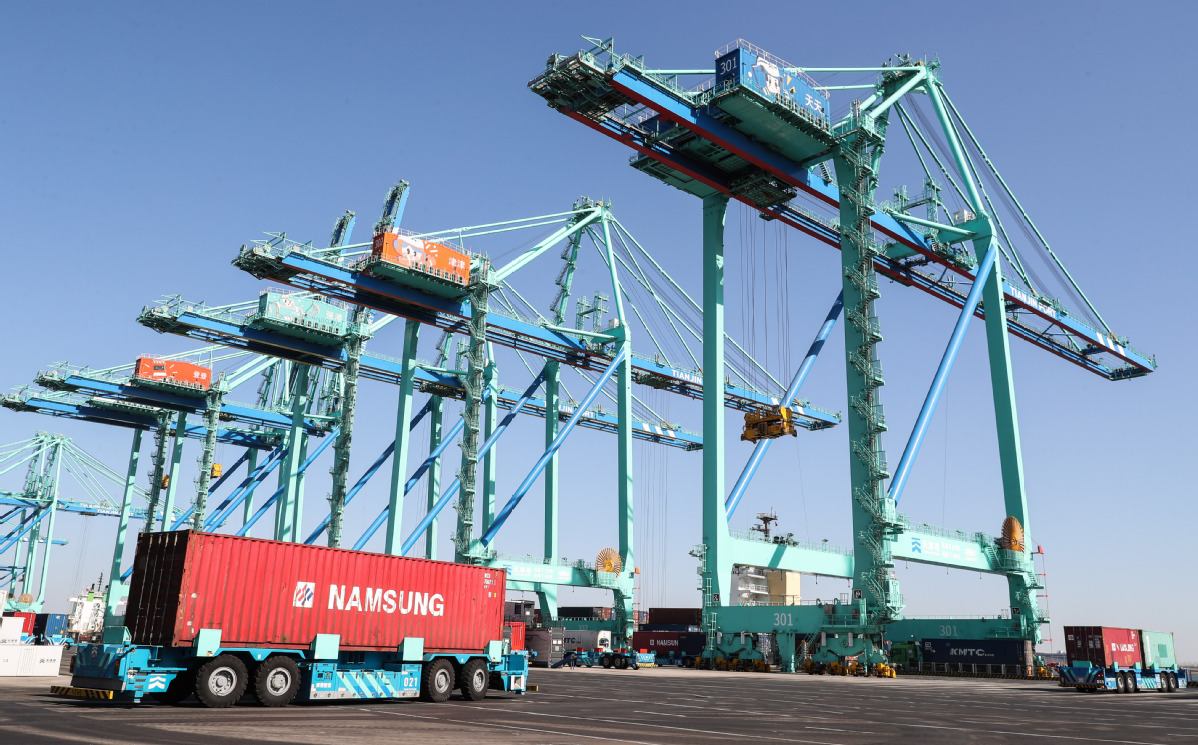Robust Start Augurs Well for Growth Goals

The decisive growth of hi-tech manufacturing, surge in foreign trade, steady recovery of consumption, and supportive policies had all contributed to China’s robust economic expansion.
Global media attention has recently riveted on China’s economic data for the first quarter (Q1) of 2024. The 5.3 percent year-on-year expansion of the country’s gross domestic product (GDP) having dominated headlines, China’s dynamic growth has clearly set the Western media back on its heels. This is only to be expected, given the past few months of their relentless “China peak” rhetoric, and hyping of the country’s fabled economic woes. China’s robust growth in Q1 testifies to President Xi Jinping’s observation, “China did not collapse as predicted by the ‘China collapse theory,’ nor will it peak as forecasted by the ‘China peak theory,’” on March 27, at a meeting in Beijing with representatives of the U.S. business, strategic, and academic communities.
The Chinese economy got off to a good start in Q1, laying a solid foundation for achieving the country’s five percent growth goal for this year, Deputy Director of the National Bureau of Statistics (NBS) Sheng Laiyun said on April 16 at a press conference. Analysts were agreed that the decisive growth of hi-tech manufacturing, surge in foreign trade, steady recovery of consumption, and supportive policies had all contributed to China’s robust economic expansion.
China’s value-added industrial output rose 6.1 percent year-on-year, hi-tech manufacturing gained a 7.5 percent increase, while the hi-tech service sector specializing in information transmission, software, and information technology achieved an even higher growth of 13.7 percent. New-energy vehicles (NEVs), solar cells, service robots, photovoltaic power generation-related polycrystalline silicon and monocrystalline silicon, meanwhile, all witnessed a year-on-year increase of more than 20 percent.
“While securing steady growth, China has also improved its industrial structure and development quality. Currently, new industries and new growth drivers have demonstrated their increasingly important role in propelling economic growth. The evident increase of profit in equipment and hi-tech manufacturing is whetting the appetite of enterprises for investment,” said Guo Liyan, a researcher with the Chinese Academy of Macroeconomic Research. In Q1, China’s investment in fixed assets rose to RMB 10 trillion, a 4.5 percent year-on- year increase.

Foreign trade also bolstered the economic upturn. China’s total imports and exports have expanded to the record high of RMB 10.17 trillion — a five percent increase year-on-year. Mechanical and electrical products, including computers, automobiles, and ships, also generated RMB 3.39 trillion in exports, accounting for 59.2 percent of the total. Chinese manufacturing, moreover, manifested its competitive edge by virtue of the 42.6 percent growth of high-end equipment in central China. That products from the private sector accounted for half of total exports demonstrates the importance of its role in China’s economy.
Such robust growth has prompted economists and institutions worldwide to lift their 2024 forecasts of China’s economy. ANZ economists raised their prediction of China’s economic growth from 4.2 percent to 4.9 percent, while those at DBS Bank raised their 2024 outlook for China from 4.5 percent to 5 percent. Deutsche Bank, meanwhile, now expects China to register a 5.2 percent growth, half a percentage point above its previous forecast.
China’s burgeoning market proves an enduring magnet for international investors. Volkswagen Group China recently announced that it will invest € 2.5 billion to expand its innovation hub in Hefei, capital of east China’s Anhui Province. Data from the German Institute for Economic Research show that direct investment from Germany to China reached a record high of € 11.9 billion in 2023 — a 4.3 percent increase over the previous year. The sum accounted for over 10 percent of Germany’s total overseas investment, the highest since 2014. While meeting visiting German Chancellor Olaf Scholz, Chinese President Xi Jinping stated that mutually beneficial cooperation between the two countries is not a “risk,” but rather the guarantee of a stable bilateral relationship, and an opportunity for the future. With their deeply intertwined industrial and supply chains and highly interdependent markets, China and German can tap the cooperation potential not just in traditional sectors, but also emerging ones, including NEVs, green transformation, and artificial intelligence.
Certain Western media point to the slow-down of domestic retail sales of consumer goods from 5.5 percent in February to 3.1 percent in March in their claim that the country’s consumption is weak. Yet consumption remains the primary driving force of China’s economy. In Q1, the contribution of consumption to economic growth stood at 73.2 percent. Notably, per capita service consumption during the same period increased 12.7 percent year-on-year. President of China Institute for Reform and Development Chi Fulin has predicted that service consumption will lead China’s consumption growth. And in an interview with Xinhua, Daniel Zipser, leader of McKinsey’s consumer and retail efforts in Asia, expressed confidence in China’s consumption by virtue of his belief that retail sales of consumer goods and services will increase by RMB 10 trillion in the next five years.
 Facebook
Facebook
 Twitter
Twitter
 Linkedin
Linkedin
 Google +
Google +










